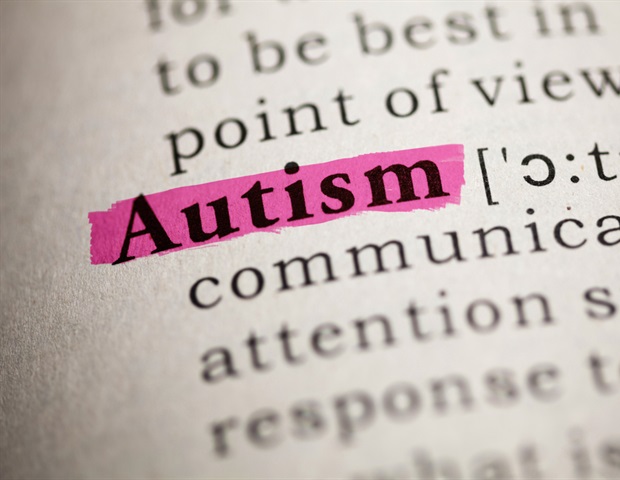
Developmental language disorder (DLD) is a problem involving the acquisition and development of language, and children with it experience difficulties speaking, communicating, understanding and expressing themselves. It is also considered an “invisible disorder” because the markers of the condition are difficult to diagnose and to understand by professionals and the child’s relatives, and some of these issues can be aggravated by gender stereotypes.
A team of experts in the interuniversity Cognition and Language Research Group (GRECIL) in the Faculty of Psychology and Education Sciences, affiliated to the eHealth Center (NHC) at the Universitat Oberta de Catalunya (UOC) and the University of Barcelona (UB), has performed a critical review of various studies to assess the consequences of sexist myths on language and communication among children, and particularly those suffering from DLD.
The researchers have listed the ten most common sexist myths or stereotypes about language and the emotional sphere, including “girls have greater communication and language skills than boys” and “boys interrupt because they know more things than girls”.
“In this study, we examined how sexist stereotypes influence important variables in the study of DLD, such as language and the socio-emotional sphere, based on the importance of working from a feminist perspective in science and in the approach to DLD,” said Nadia Ahufinger, a member of the UOC’s Faculty of Psychology and Education Sciences and of the Docentes Feministas por la Coeducación (Feminist Teachers for Coeducation, DoFemCo) association, and Mari Aguilera, an expert at the University of Barcelona, the authors of the review.
The review also took into account aspects including the relationships between sexist socialization factors and the development of language and socio-emotional skills among children suffering from DLD, also known as specific language impairment (SLI). “These factors can have a negative impact on the detection and assessment of girls and boys with language difficulties at different stages of their development,” Ahufinger pointed out.
The prevalence of DLD is estimated at around 7% in the pediatric population, i.e. one child in fourteen suffers from this type of disorder. “These boys and girls mainly present difficulties expressing and understanding spoken language, but their difficulties also extend to non-linguistic aspects including cognition, memory, academic performance and socio-emotional skills,” said Aguilera.
Androcentric detection and assessment
In their review, the experts argue that sexist stereotypes have led to an androcentric detection and assessment of developmental language disorder. This situation has led to a more marked increase in cases of this type of disorder being detected among boys than girls, because boys tend to present more disruptive behaviors.
According to the scientific evidence, the difference between boys and girls in terms of language acquisition is not large enough to justify the widespread belief or myth that girls have better communication skills and language skills throughout their development, and we must understand that this idea is due to a sexist stereotype.”
Nadia Ahufinger, Member of the UOC’s Faculty of Psychology and Education Sciences
Sexist stereotyping therefore has a major impact on the development and expression of emotionality, as well as on the way people relate to other people, i.e. on social relationships. “The sexist stereotype stems from the belief, which is still widespread even today, that girls/women are emotional and empathetic individuals who are oriented towards other people, and especially towards boys/men, and boys/men are rational individuals, oriented towards their own goals and achievements,” said Aguilera.
In the opinion of the researchers, it is therefore necessary to take into account that girls may have language difficulties in the same way that boys do, but that they express them in a different way than their male counterparts.
An overrepresentation of boys and underdiagnosis of girls
According to the experts, studies of this disorder have to date suffered from an overrepresentation of boys in the samples, and the research may or may not identify or respond to the needs of girls.
“Due to this androcentric perspective, we still don’t know if there is a profile of language difficulties – emotional, social and involving the various spheres affected – with this disorder that may differ between boys and girls. This aspect can directly lead to an underdiagnosis of girls and imbalances in the design of the intervention,” said Ahufinger, adding that, given this situation, a methodology which takes the feminist perspective into account is required.
There is a further problem, since the influence of these gender stereotypes can encourage families to believe that girls do not have the same need to visit a professional, since according to the myths, girls should not have any difficulties, simply because they are girls. The adoption of these stereotypes in the discipline of communication and language can therefore lead to girls receiving inappropriate treatment, and even to their underdiagnosis.
Alternatives for improving diagnosis and therapies
In order to improve the diagnosis and the therapies required, these experts propose various approaches and alternatives to the current working models aimed at fostering interdisciplinary work. “Protocols and guidelines that take sexist biases into account in the detection and evaluation of DLD and in work with families must be incorporated so that this population can be treated based on coeducation and real equality,” stressed Ahufinger.
In their review, the experts developed several proposals for carrying out research and for therapies that represent girls and boys on equal terms and include good practices. As a result, from a feminist perspective, explanations of false myths related to sexist stereotypes must be included in these protocols, and widespread and deeply rooted ideas about gender roles must be refuted.
“It is essential to train pediatricians and medical professionals so that they are aware of warning signs in young children that may indicate a possible disorder in the future,” concluded the experts, who also stressed that “it is important to work to integrate shared protocols between speech therapists and medical professionals.”
Source:
Universitat Oberta de Catalunya

 PARENTING TIPS
PARENTING TIPS







 PREGNANCY
PREGNANCY








 BABY CARE
BABY CARE








 TODDLERS
TODDLERS








 TEENS
TEENS








 HEALTH CARE
HEALTH CARE






 ACTIVITIES & CRAFTS
ACTIVITIES & CRAFTS








 CONTACT
CONTACT ABOUT
ABOUT


